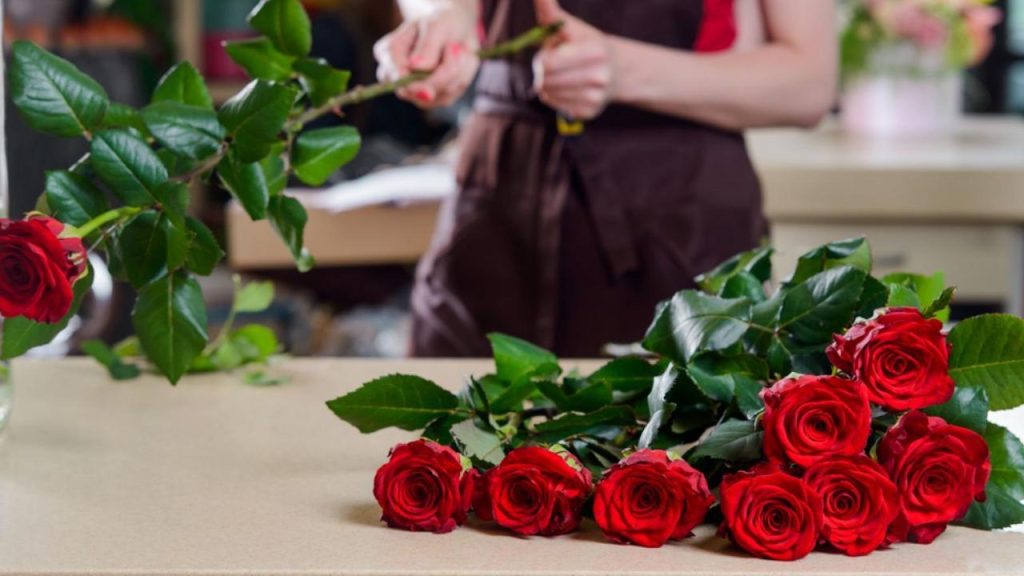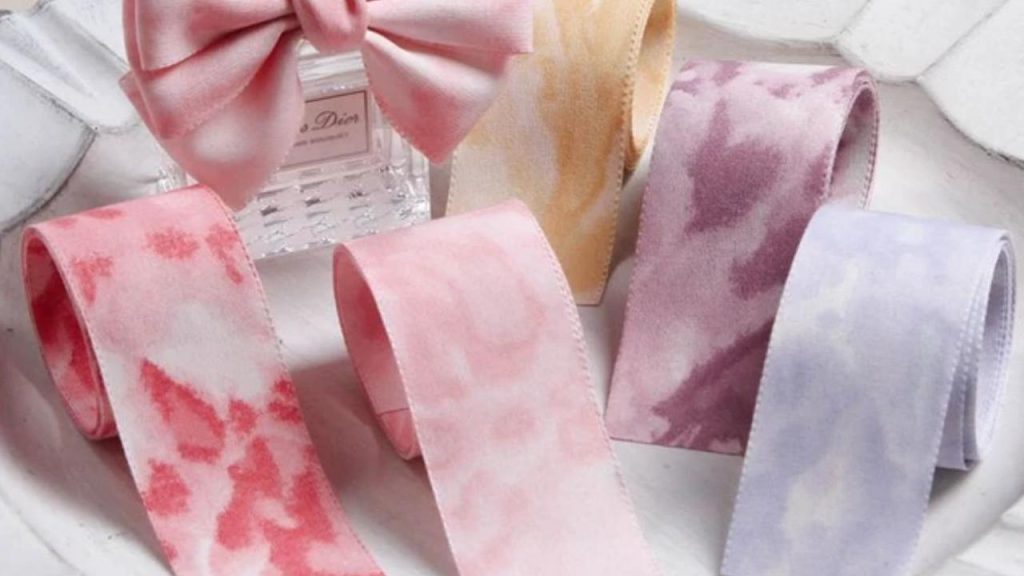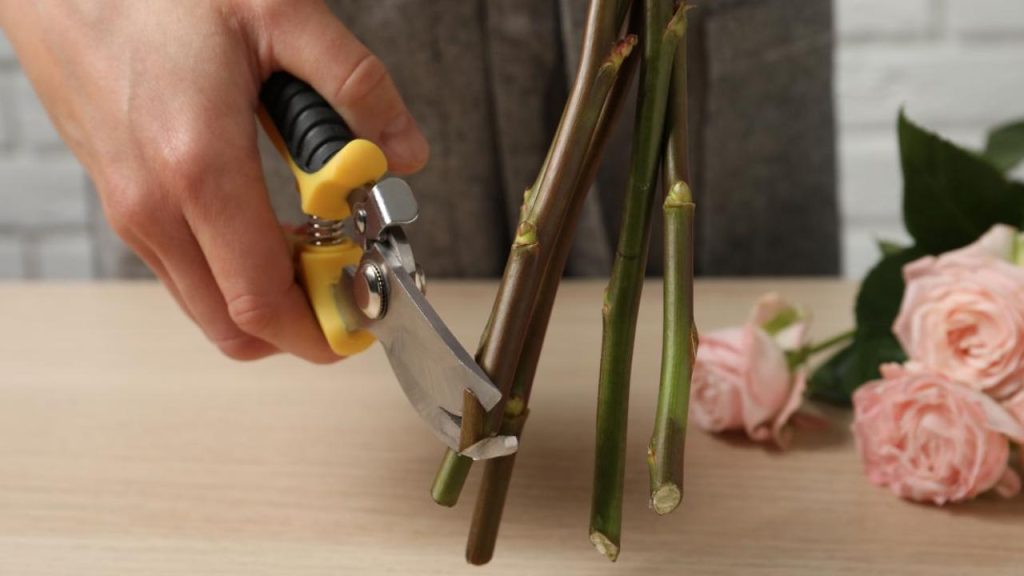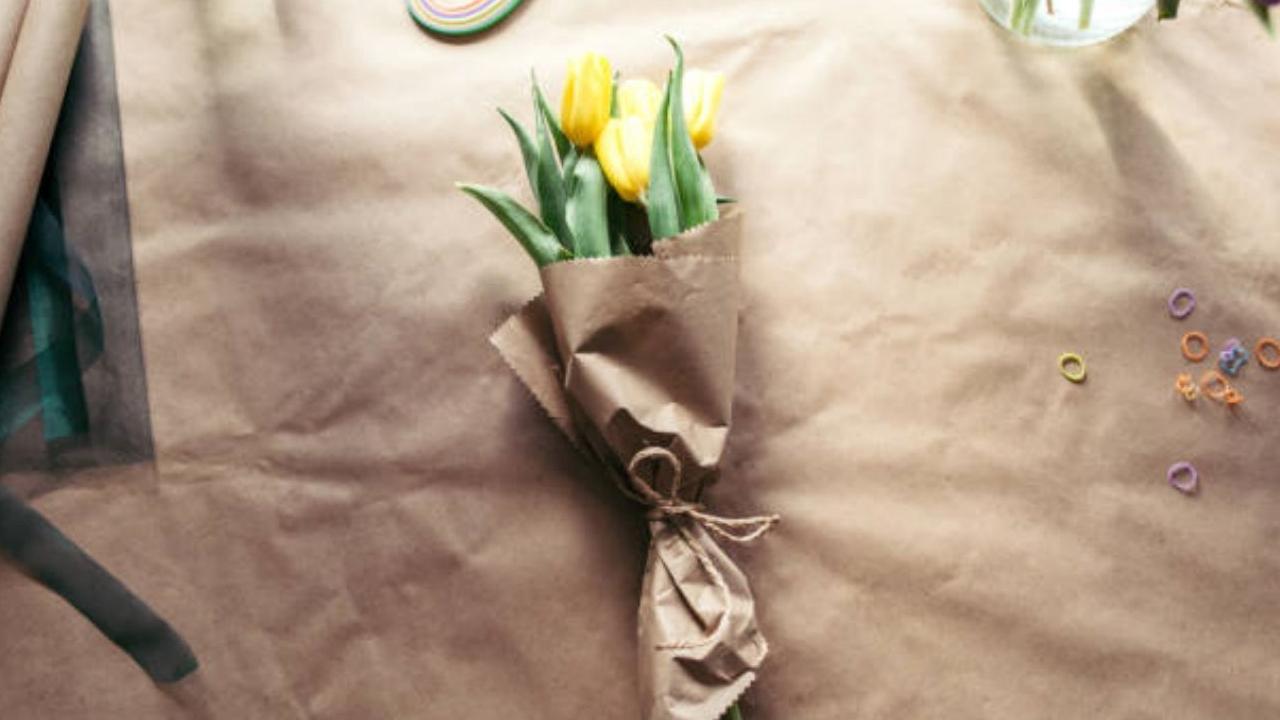Giving someone a beautiful bouquet of flowers can brighten their day. But did you know the wrapping can make just as much of an impact? Taking the time to wrap flowers properly helps protect them during transport and enhances the presentation.
Whether you want to wrap flowers for a special occasion or just to surprise someone with a pop of color, this guide will walk you through the process. Follow these simple steps for picture-perfect floral wrapping every time.
Materials Needed
Before getting started, gather these basic flower wrapping supplies:
- Fresh flowers – buy from a florist or use flowers from your garden
- Floral shears or scissors
- Floral tape
- Cellophane or tissue paper
- Decorative ribbon
- Florist wire (optional)

Step 1: Prepare the Flowers
Start by preparing the flowers you want to wrap:
- Select fresh, vibrant blooms without wilting or browning.
- Cut the stems at an angle to allow more water uptake using floral shears. Remove leaves below water line.
- Arrange flowers how you want them to look in the final wrap. Play with color, variety, and size.
- Group together flowers of similar stem length to make wrapping easier.

Step 2: Wrap in Cellophane or Tissue
Cellophane or tissue paper help protect flowers before the final decorative wrap:
For Cellophane:
- Cut a piece of cellophane wide enough to fully wrap around the bouquet.
- Lay cellophane flat and place flowers face down in middle.
- Bring cellophane up around flowers and gather at stems. Twist gently and tie off with ribbon.
For Tissue Paper:
- Lay flowers face down on tissue paper.
- Wrap tissue around stems then up and around the blooms.
- Fold under any excess tissue and tie ribbon around stems to secure.

Step 3: Add Decorative Ribbon
Choose a beautiful ribbon that enhances your flowers:
- Cut the ribbon to about 3 times the length of the flower stems.
- Lay ribbon underneath the stems. Wrap ribbon up and around stems, crossing in front.
- Continue wrapping, overlapping ribbon until stems are covered.
- Finish with a bow or knot, trimming ends.

Step 4: Wire Wrapping (Optional)
For extra protection and support:
- Cut florist wire about 2-3 times the length of stems.
- Place stems on wire and wrap wire tightly around stems from bottom to top. Twist ends of wire together.
- Use this wired stems wrap as the base before adding tissue, cellophane, and ribbon.
Step 5: Care Tips
Follow these care tips for wrapped flowers:
- Keep flowers hydrated by recutting stem ends before placing in water.
- Remove wrapping and re-cut stems every 2-3 days. Change the water daily.
- Avoid extreme temperatures. Keep flowers out of direct sunlight and away from drafts.
- Consider flower food packets to provide extra nutrients and prolong vase life.
- Monitor for wilting and replace individual blooms as needed to maintain beauty.

Alternative Wrapping Ideas
For a creative twist, try these unique flower wrapping ideas:
- Use burlap or lace instead of standard wrapping paper.
- Incorporate leaves, herbs, or twine for a rustic chic look.
- Wrap colorful yarn around stems for a fun, handmade appearance.
- Submerge wrapped stems in a painted glass vase full of pebbles.
- For irregular shaped bouquets, neatly wrap in brown kraft paper and tie with string.
- Nestle blooms in a basket, box, or tin can for a casual wrapped effect.
Occasions for Wrapped Flowers
Flower wrapping helps preserve arrangements for special deliveries. Consider wrapped flowers for:
- Birthdays
- Anniversaries
- Holidays like Mother’s Day
- Get well gifts
- Weddings
- Sympathy and funeral flowers
- Hospitality or guest room Arrangements
- Gifts just because!
Common Flower Wrapping Questions
If you’re new to working with flowers, here are answers to some common questions about flower wrapping:
How do florists wrap bouquets?
Florists use special tissue or cellophane to wrap flowers. Stems are first wrapped with wet floral foam or wire for support. Tissue paper is wrapped around foam to protect blooms. Decorative paper or cellophane is added last. Ribbon and other embellishments finish the wrap.
How long do wrapped flowers last?
Properly wrapped flowers should last 5-7 days with proper care. Recut stems every few days, change water daily, and remove wrappings that wilt or discolor to maximize vase life. Avoid extreme temperatures and direct sunlight.
Can you wrap flowers in plastic wrap?
Plastic wrap isn’t recommended since it doesn’t allow air flow. Opt for breathable tissue paper or cellophane. But for very short term, plastic wrap can work in a pinch. Just unwrap and re-cut stems right away before placing in a vase.
What can be used instead of floral tape?
If you don’t have floral tape, thinly cut fabric strips, jute, or twine can substitute to wrap stems. White electrical tape or masking tape also works. Wrap gently to avoid damaging delicate stems.
How do you wrap flowers so they don’t crush?
Use light, breathable papers or cellophane rather than heavy wrapping materials. Wrap the paper loosely around the blooms instead of tight. Crisscross sturdy ribbons up the stem for support instead of crushing the stems.
Beautiful Wraps Protect Lovely Blooms
Wrapping flowers properly is an art but also very learnable. With the right materials and gentle technique, your floral gifts will stay fresh longer and look oh-so-pretty presented to the recipient. Become known for your exquisitely wrapped bouquets using these tips. The joyful reactions when someone special receives a gorgeously wrapped bundle of blooms makes the effort well worth it.




Leave a Comment